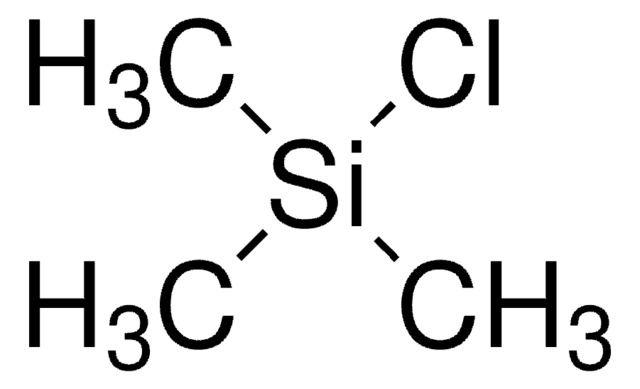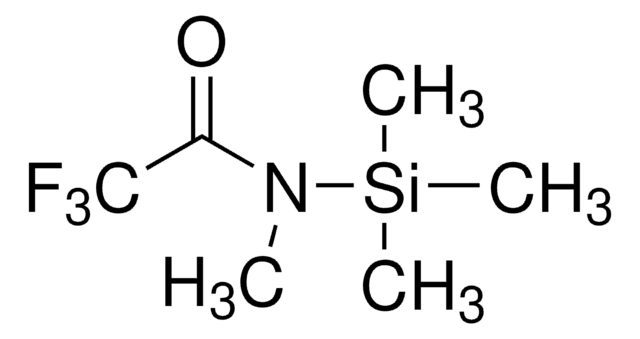52619
Hexamethyldisilazane
for GC derivatization, LiChropur™, ≥99.0% (GC)
Sinónimos:
HMDS
About This Item
Productos recomendados
grado
for GC derivatization
Nivel de calidad
Análisis
≥99.0% (GC)
formulario
liquid
calidad
LiChropur™
idoneidad de la reacción
reagent type: derivatization reagent
reaction type: Silylations
técnicas
gas chromatography (GC): suitable
índice de refracción
n20/D 1.407 (lit.)
n20/D 1.408
bp
125 °C (lit.)
cadena SMILES
C[Si](C)(C)N[Si](C)(C)C
InChI
1S/C6H19NSi2/c1-8(2,3)7-9(4,5)6/h7H,1-6H3
Clave InChI
FFUAGWLWBBFQJT-UHFFFAOYSA-N
¿Está buscando productos similares? Visita Guía de comparación de productos
Categorías relacionadas
Descripción general
Aplicación
It may be used as a derivatizing reagent for the analysis of bioamines and their acidic metabolites, phenol, hydroquinone and catechol in urine samples, mixtures of free fatty acids and metal soaps in paint samples using gas chromatography/mass spectrometry (GC/MS).
Características y beneficios
- HMDS is inexpensive and has a relatively low boiling point (124-127 °C).
- It can be used without solvent but its silylating power can be increased by various (mostly acidic) catalysts.
- The only reaction byproduct, ammonia, can leave the reaction mixture as the reaction goes to completion.
Otras notas
Información legal
Palabra de señalización
Danger
Frases de peligro
Consejos de prudencia
Clasificaciones de peligro
Acute Tox. 3 Dermal - Acute Tox. 4 Inhalation - Acute Tox. 4 Oral - Aquatic Chronic 3 - Flam. Liq. 2
Código de clase de almacenamiento
3 - Flammable liquids
Clase de riesgo para el agua (WGK)
WGK 2
Punto de inflamabilidad (°F)
52.5 °F - closed cup
Punto de inflamabilidad (°C)
11.4 °C - closed cup
Equipo de protección personal
Faceshields, Gloves, Goggles, type ABEK (EN14387) respirator filter
Elija entre una de las versiones más recientes:
¿Ya tiene este producto?
Encuentre la documentación para los productos que ha comprado recientemente en la Biblioteca de documentos.
Artículos
Results of a study involving the ability few Fluka silylating reagents to form GC-MS-compatible trimethylsilylmethyl derivatives of NSAIDs
Nuestro equipo de científicos tiene experiencia en todas las áreas de investigación: Ciencias de la vida, Ciencia de los materiales, Síntesis química, Cromatografía, Analítica y muchas otras.
Póngase en contacto con el Servicio técnico






